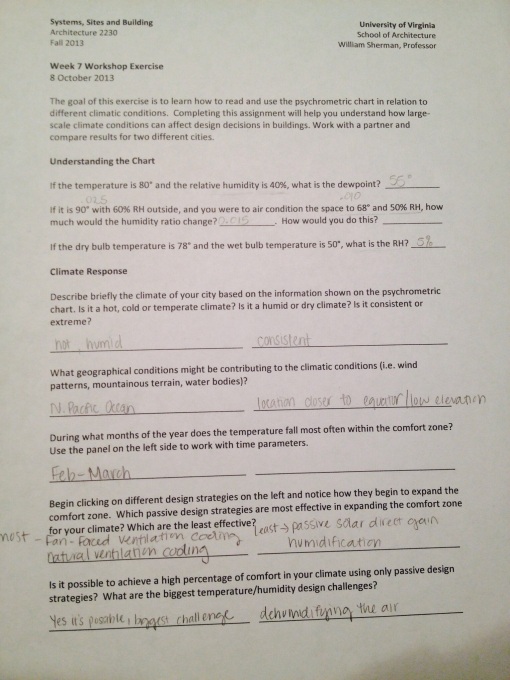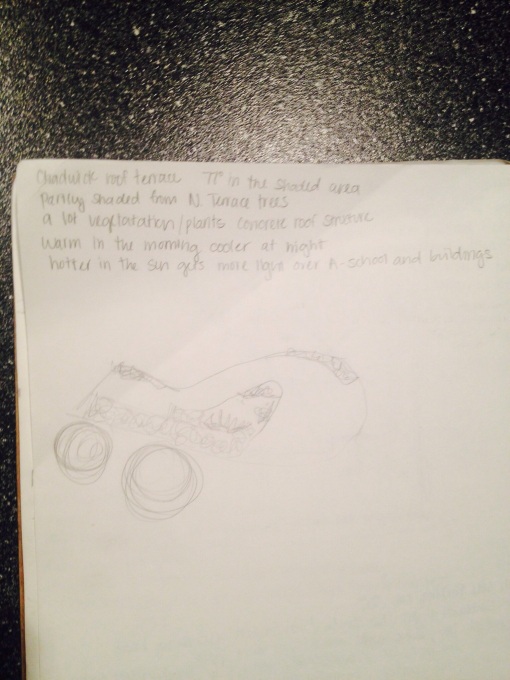Monthly Archives: December 2013
Blog Post 8: Revisting Resiliency
Recently the term resiliency has become frequently used when talking about sustainability and ecosystems, but what does resiliency really mean? In the reading Resilience Practice Brian Walker and David Salt define resiliency as having four main origins; psychological, ecological, disaster relief and military, and engineering (Walker 2). In this particular writing, the authors define resiliency as the ability to cope with shock and keep functioning in much the same kind of way (Walker 3). Understanding that the word identity is very much central to the meaning of resiliency is key in understanding its role in social-ecological systems. I think by looking at resiliency through this particular lens is helpful in further understanding an earlier discussion of resiliency in the semester.
Thinking about recent disasters that have destroyed coastline cities, give opportunities to architects to help rethink and redesign cities with a greater understanding of factors that expand outside of just the design field. However, White Arkitekter design firm’s winning entry of the design competition “For a Resilient Rockaway” focuses on pushing past the meaning of resiliency to a new term as they call “antifragile”. The design competition was a four-phrase entry that focused on the rebuilding of the Rockaway Peninsula on Long Island after the devastation of Hurricane Sandy (Photo 1). The firm believes that resiliency implies a certain return to something that was damaged to its original form and argues the Rockaway Peninsula must not return to the past but push to improve the conditions for the generations to come (Archdaily). Their solution was to create an authentic urban development that integrated a mix of housing types supported by commercial and public spaces and social places(Photo 2).
The firm also suggested a series of small step interventions that they describe to be adaptable, feasible, affordable and smart. This small intervention approach was also captivating because it allowed for the design itself to become flexible and mold to the needs of the community. The firm describes the project to be adjustable and central to the growth and development of the community of the Rockaways, and even their design approach suggests a new type of design process. Their approach to resiliency also focuses on the dangers of excluding certain socio-economic classes as well as the practical threat of future disasters. The design includes a protected nature preserve, a series of offshore sandbanks, storm water parks, and a beach landscape that weaves nature into the plan (Photo 3).
The goal of the firm was to develop a community from the existing strengths and form a symbiotic relationship with the environment and use the analogy of a surfer and the ocean (Archdaily). The design seeks to redefine what resilience means and push further to create affordable living for all socio-economic groups and create a diverse community. To protect from natural disasters, water is not forced away form the boardwalk but directed into storm water parks and redirected as it flows into the community. The boardwalk becomes flexible and both uses resiliency to rebuild the economics of the community by creating commercial spaces and protects the community from the ecological threats (Photo 4). This type of engaging architecture is thought to create an impacting environment for future generations.
 Photo 4
Photo 4
These methods of resilient design approach can extend to multiple cities that have also faced natural disasters such as New Orleans, but also multiple cities across the globe that face problems of pollution, poverty, and lack diversity. Cities have the ability to change and grow into cities that progress and create a higher quality of life not just for one group of people but for many people. This could be the birth of biophillic cities.
http://www.archdaily.com/441941/white-arkitekter-wins-far-roc-design-competition/









Recent Comments